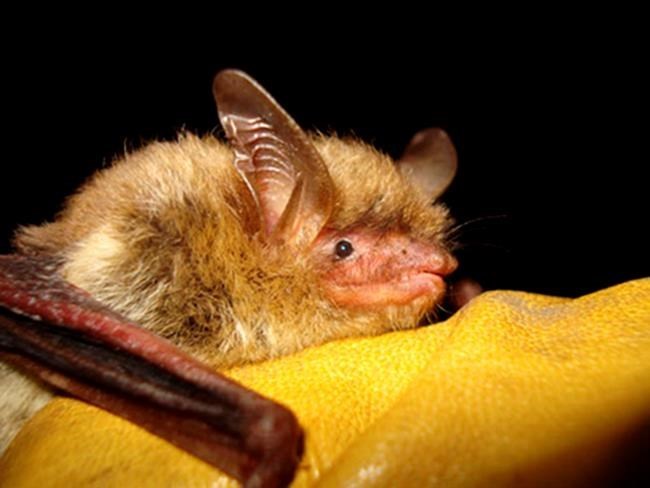
FILE - This undated file photo provided by the Wisconsin Department of Natural Resources shows a northern long-eared bat. The U.S. Fish and Wildlife Service is proposing to list it as endangered. Officials say its population has fallen sharply because of a fungal disease called white-nose syndrome, which has spread across nearly 80% of the species' range. (Wisconsin Department of Natural Resources via AP, File)
Republished March 22, 2022 - 9:08 AM
Original Publication Date March 22, 2022 - 5:51 AM
TRAVERSE CITY, Mich. (AP) — Federal officials on Tuesday proposed designating the northern long-eared bat, once common but ravaged by a deadly fungus, as an endangered species.
The population has plummeted since colonies infected with white-nose syndrome were spotted in New York caves in the mid-2000s. The bat is likely to go extinct without a dramatic turnaround, the U.S. Fish and Wildlife Service said.
“It’s going to be difficult but we're going to do everything humanly possible to stop the decline,” said Charlie Wooley, director of the service's Midwest region.
Named for white, fuzzy spots that appear on infected bats, white-nose syndrome attacks their wings, muzzles and ears as they hibernate in caves and abandoned mines.
It causes them to become active and sometimes fly outside too soon. They burn up their winter fat stores and eventually starve.
Where the fungus originated is unknown, but scientists say it may be carried on people's clothes and shoes. It has spread to a dozen U.S. bat species, but the northern long-eared is among the hardest hit.
Found in 37 central and Eastern states and much of Canada, it roosts alone or in small groups during summer in tree cavities or crevices, or beneath the bark. Emerging at dusk, it flits through forests to feed on moths, beetles and other insects.
Bats are believed to give U.S. agriculture a $3 billion yearly boost by gobbling pests and pollinating some plants.
The Fish and Wildlife Service listed the northern long-eared as threatened in 2015. Since then, white-nose syndrome has spread across nearly 80% of its range and is expected to cover it all by 2025, prompting the proposal for the more severe designation.
Scientists have no estimate of how many remain, said Shauna Marquardt, supervisor of the agency's ecological field office for Minnesota and Wisconsin. But they've recorded drop-offs of 97%-100% in caves where population surveys have been taken for decades.
“There might have been thousands before and now we're seeing fewer than 100, and in some cases they're absent completely," Marquardt said.
Officials will take public comment through May 23 and decide in November whether to approve the “endangered” designation, which would make it illegal to kill the bats. Under the “threatened” status, the agency sets rules to conserve them but can allow small numbers to be sacrificed for economic development projects.
Preservation efforts include working with loggers, power companies, road builders and other industries to protect trees where the bats nest in summer and give birth, Wooley said. Winter hibernation areas also need security, he said.
“We have a strong foundation in place for working with stakeholders to conserve the bat while allowing economic activities within the range to continue to occur, and will continue to build on these,” an agency statement said.
Wind turbines also pose a danger to migrating bats, although much less than white-nose syndrome, Marquardt said. The wind energy industry has 16 habitat conservation plans and is developing 13 others, she said.
The Fish and Wildlife Service is leading a campaign involving more than 150 agencies, private organizations and Native American tribes to research white-nose syndrome, reduce its presence where bats hibernate and help them recover. Work on a vaccine is underway, Marquardt said.
Approval of the endangered status and stepped-up rescue efforts are urgently needed, said Winifred Frick, chief scientist for Bat Conservation International, a research and advocacy group.
“We either need to find a solution to white-nose syndrome or ways to improve the body conditions of the bats that are still remaining on the landscape to have the best chance of survival,” Frick said.
___
Follow John Flesher on Twitter at http://www.twitter.com/JohnFlesher
News from © The Associated Press, 2022